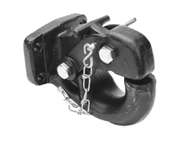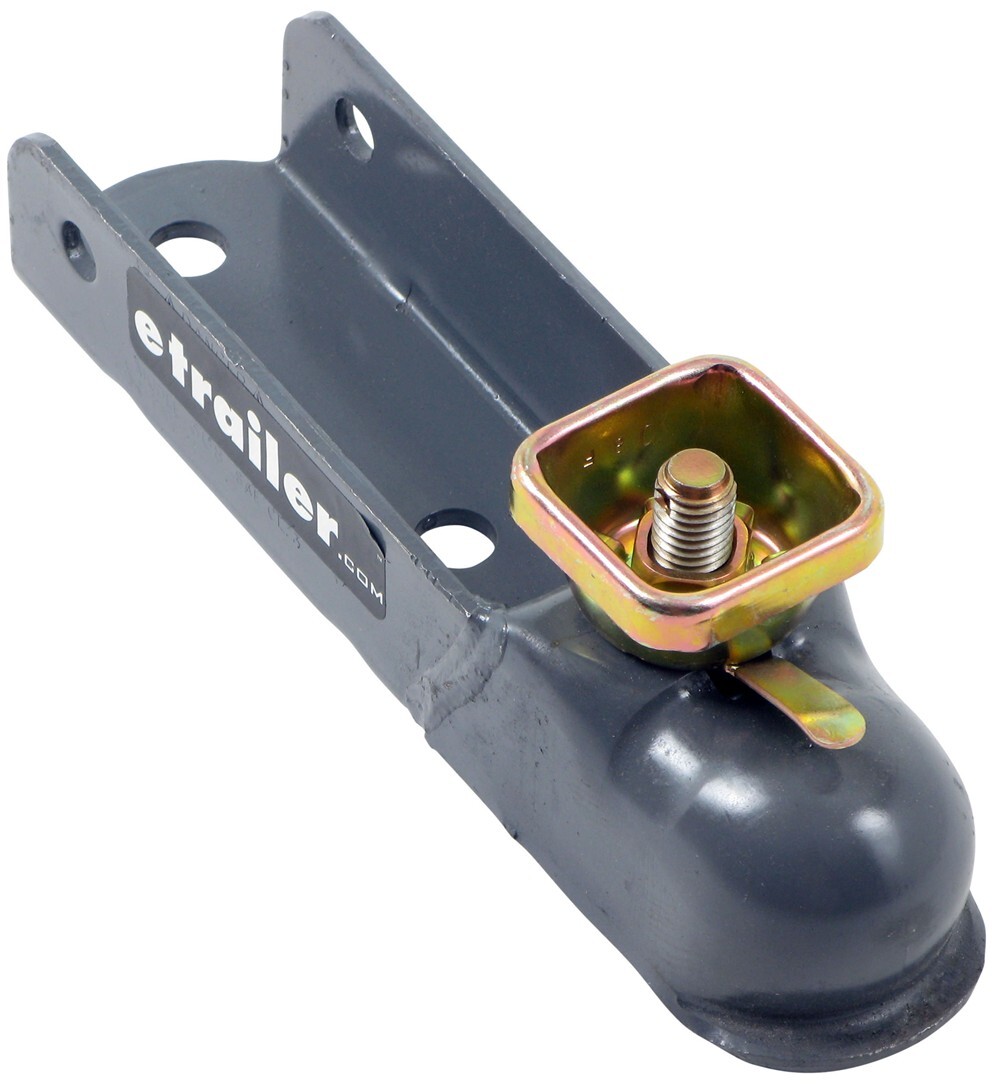Understanding the most popular Cement mixing trailer hitches and couplers
Towing a portable cement mixer seems pretty straight forward: hook it up to your truck and go, right? Well, not quite so fast. Like everything else that looks easy to do, there are some thing to know. The larger the cement mixer, the more you have to pay attention to. The contractor type, single axle towable mixer is fairly simple and has few options regarding towing. Some have just a loop of steel on the front and are made to slip into a pintle hitch.
 Others have what I call a boat hitch because it’s usually seen on smaller boat trailers. The most common of these couplers are made for a 2” towing ball. These hitches have a handle that, in the raised position, releases the ball latch and when pushed downward locks the ball in place. They are simple to use and will have a hole drilled in the handle to put a small bolt through to keep the it from coming loose and releasing the ball latch.
Others have what I call a boat hitch because it’s usually seen on smaller boat trailers. The most common of these couplers are made for a 2” towing ball. These hitches have a handle that, in the raised position, releases the ball latch and when pushed downward locks the ball in place. They are simple to use and will have a hole drilled in the handle to put a small bolt through to keep the it from coming loose and releasing the ball latch.
The size of the contractor cement mixers are generally less than nine cubic feet and are not heavy enough to require brakes. However, the larger portable cement mixer trailers carry at least one yard (Cart-Away makes a unit that will carry 1-3/4 yards!) and these trailers require brakes. They still have ball couplers, but these couplers are attached to a brake actuator and are rated for a much higher weight capacity. There are many models of couplers on these larger mixing trailers, but the type of coupler is usually one of these three: pintle ring, ball with screw knob, ball with latch handle. Let’s take a look at them:
The pintle ring is typically seen on the larger version of the mixing trailers such as Cart-Away’s MixKing 1-3/4 yard unit (Spec Sheet HERE). The ring is intended for high weight ratings. The pintle is typical for being very easy to hook up, however, those without experience pulling a concrete trailer so equipped may be unnerved by the “clunk” of the ring as it slides forward during stops and slides back when the towing vehicle pulls away from a stop. The ring fits into the pintle hitch that is attached to the towing vehicle. 
The ball with screw knob comes in a few varieties. Some have a square knob (Fulton), some have a round knob (Dico) and some have a loop nut (Croft). Each style has the advantage that repair kits are available to replace worn parts and extend the life of the coupler.
If the days comes that you do need to completely replace the coupler, and yes, they do wear out, be sure you purchase one with the correct weight rating. Personally, I dislike the loop nut (they tend to break) and find the round knob, common on the older style of mixing trailers, the most comfortable to use.
The last ball coupler, and the most modern, is the ball with latch handle type. Now this style looks similar to those on the contractor mixer, but there are a few big differences. First of all, the weight ratings on this go up to 10,000 pounds, which is perfect for the portable mixing trailers.
Second, this coupler is an auto-locking ball coupler. Even with the latch down in the locked position you can lower the coupler onto the ball and it will automatically lock into place. This makes hooking the mixer trailer up to the towing vehicle very easy. The sound of the ball latch locking in place is also an audible check that the trailer is properly locked onto the ball.
If you have used another style of hitch or coupler combination that has worked on your concrete mixer, please let us know and we will add it to the list.
